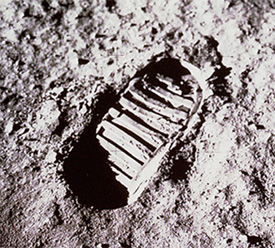First-Hand:Space Program reminiscences

Submitted by Carol Crom
I was involved in the space program for a short period of time working for the Tulsa Division of Douglas Aircraft Company (DAC) 1956-1958 time frame.
As I recall the DAC Missiles and Space Division transferred a project to us for the Second or third Stage Throe Bravo vehicle (I can’t remember which). I was an antenna engineer responsible for the telemetry Range safety and the C-band FPS-16 Radar transponder antennas.
We had run all kind of tests to verify that all antennas would perform adequately for the entire flight trajectory of the reentry tests., and were really excited when launch time came. The excitement didn’t last very long after the first launch count down. As I recall about a minute or two after launch the range safety officer destroyed the missile because the AGC voltage telemetered back for the C-Band Transponder had approached zero.
That was embarrassing for the division to have their first attempt at building a space vehicle fail. It was particularly embarrassing for me because it seemed to be that the antenna failed to provide coverage. The problem turned out to be caused bu the polarization shift when the missile flew over the Radar site. We quickly solved the problem by installing a circular polarized C-Band antenna for the FPS-16 transponder. The second missile was launched and preformed as expected.
Our division went on to build the prototype third stage transit tyros missile. I wasn’t in charge of the antennas for that one but I did consult with the younger designer was responsible for the omnidirectional telemetry antenna.
About a week before engineers at Cape Canaveral were scheduled to begin their “closed-loop tests” they asked our Engineering Rep., Hoopengarner, (We called him Hoope, I forgot his first name) where the “Hats” were for the closed loop tests. No one at our division had any idea of what they were talking about. After some discussion with Hoope, We determined that the closed loop tests were non radiating tests hard wired through the antennas. The hats were the coupler from a coax cable to the antennas which were supposed to represent free space coupling. WE didn’t have any contract for the hats and the “inertia” within Douglas didn’t allow for anything getting done without some kind of a contract. So that took time for getting the hats designed which was my problem.
Both the range safety and C-Band beacon antennas were flush mounted but were quite different. The Hat for the C-Band beacon was the easiest because it was a waveguide type. The hat was a similar antenna contoured to mount on the space vehicle.
The Range Safety antenna was narrow band half wavelength cavity backed slot antenna, so we had to have a very loose coupling to keep from detuning the antenna. I just used a small loop of wire terminated by a a 50 ohm resister and mounted it a fairly large cavity.
The Telemetry antenna was a blade type with an ablative coating to keep it from being destroyed during blackout. it’s hat was similar to that for the range safety antenna except the cavity had to be large enough to accommodate the Blade.
Getting these hats designed and through the Douglas system was difficult but we made it with all the hats painted a shiny yellow as I recall.
The engineers at the Cape were not too pleased with my hats because they wanted to be able to check the antenna impedances through the hats. I told them that was impossible, and they would have to be satisfied with coupling coefficients that I gave to them. Time was too short for them to complain so they accepted the hats that we gave to them. As I recall the hats worked fine for their purposes.
I left the company in 1958, but I remember that the Tulsa Division of DAC remained involved for several more years.
Back to Human Space Travel Primary Sources